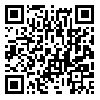BibTeX | RIS | EndNote | Medlars | ProCite | Reference Manager | RefWorks
Send citation to:
URL: http://rjms.iums.ac.ir/article-1-913-en.html
Background & Aim: Cupping therapy(Hejamat) as one of the methods used in traditional Iranian medicine is now progressively applied. Some scholars are seriously against this method of treatment, while some others admit it without questioning. The goal of this study is to assess traditional treatment centers and their clients in Tehran. The study also intended to determine demographic features of the clients, the frequency of illnesses for which the patients were referred to these centers, and the clients' satisfaction with cupping therapeutic effects. Patients and Method: This cross-sectional study was done on 400 clients attending 15 traditional medical centers through a questionnaire and interviews. Random sampling and simple sampling methods were used to select the studied Hejamat centers and the subjects respectively. Mean, SD(standard deviation) and frequencies were reported to describe the data. Chi-square and Kruskalwalis test were used to analyze the obtained results. Results: The results revealed that over 85% of the clients were satisfied with the therapeutic effects of Hejamat. Most of the subjects were men, married, low educated and had a below-average monthly income. 63% believed that this method was less expensive than other methods of treatment. Strong faith in the usefulness of Hejamat and religious beliefs were the most common motivations on the part of the clients. Conclusion: With regard to increasing use of cupping to treat a wide group of illnesses and the clients' satisfaction, presenting suitable and proper use, informing people of its usage, and supervising the above-mentioned centers should be considered by authorities.





